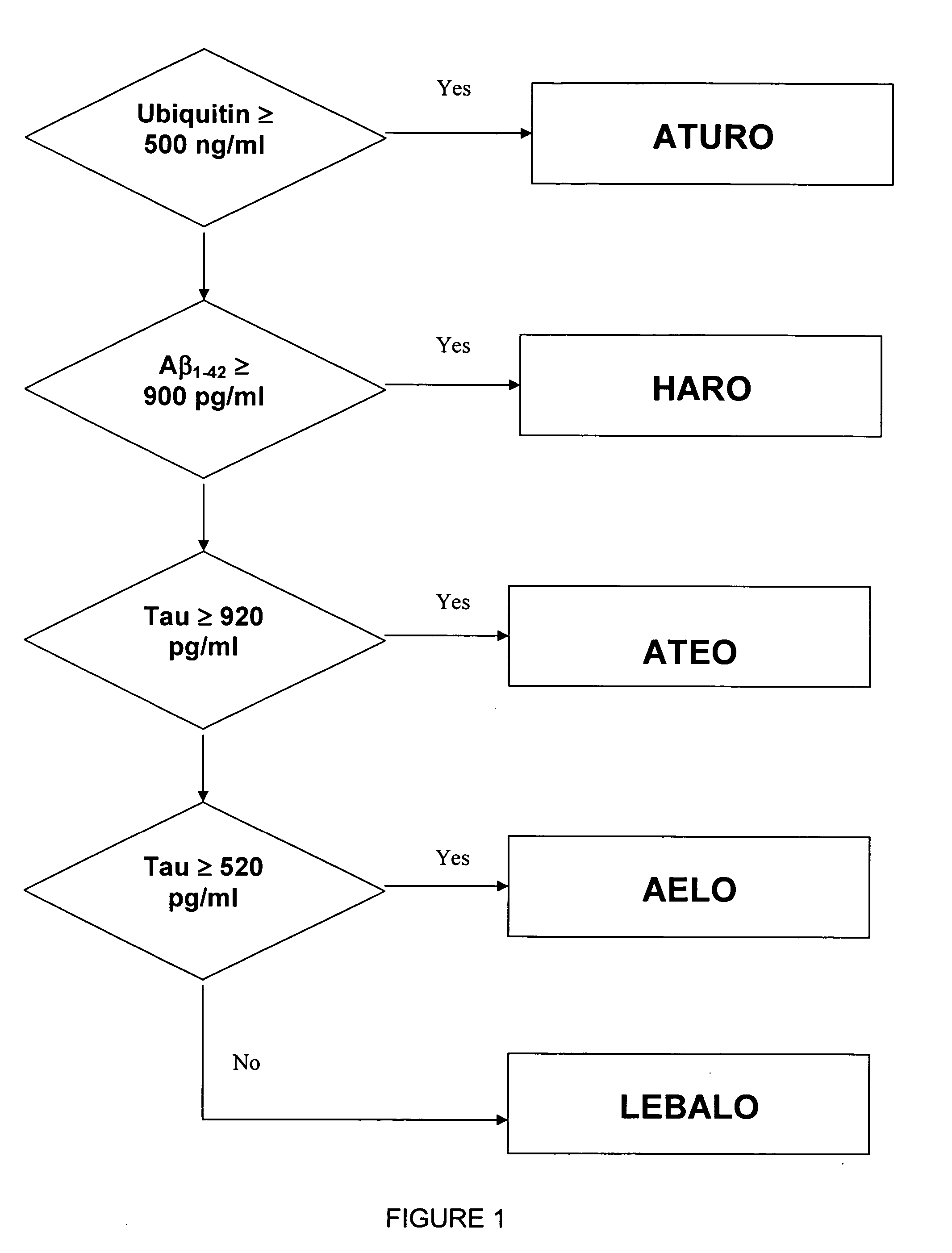Method for differentiation of Alzheimer's disease into subgroups
a technology for alzheimer's disease and subgroups, applied in the field of methods of diagnosing and prognosing alzheimer's disease, can solve problems such as difficulty in learning, gradual loss of memory, and problems with reasoning or judgmen
- Summary
- Abstract
- Description
- Claims
- Application Information
AI Technical Summary
Benefits of technology
Problems solved by technology
Method used
Image
Examples
Embodiment Construction
[0018] Alzheimer's disease (AD), the most common cause of dementia, is multifactorial and both clinically and histopathologically heterogeneous. In less than 5% of cases the disease co-segregates with certain mutations in β-amyloid precursor protein (β-APP), presenilin-1 or presenilin-2 genes. The remaining over 95% of AD cases are not associated with any known mutations and the nature of the etiological agent(s), which could be some metabolic and or environmental factor, is not yet understood. Independent of the etiology, whether genetic or non-genetic, AD is characterized clinically by progressive dementia and histopathologically by the presence of numerous neurofibrillary tangles and neuritic (senile) plaques with neurofibrillary changes in the dystrophic neurites. Because of clinical heterogeneity the diagnosis of AD remains probable till postmortem histopathological examination of the brain, and is made using primarily criteria which exclude other causes of dementia.
[0019] The...
PUM
 Login to View More
Login to View More Abstract
Description
Claims
Application Information
 Login to View More
Login to View More - R&D
- Intellectual Property
- Life Sciences
- Materials
- Tech Scout
- Unparalleled Data Quality
- Higher Quality Content
- 60% Fewer Hallucinations
Browse by: Latest US Patents, China's latest patents, Technical Efficacy Thesaurus, Application Domain, Technology Topic, Popular Technical Reports.
© 2025 PatSnap. All rights reserved.Legal|Privacy policy|Modern Slavery Act Transparency Statement|Sitemap|About US| Contact US: help@patsnap.com

